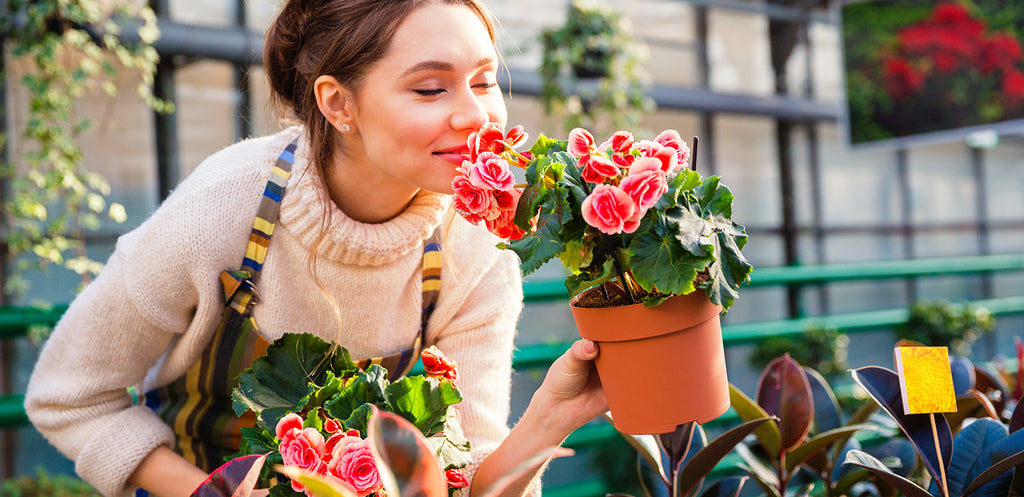
Potted Perfection: A Comprehensive Guide to Growing Camellias in Pots
Among flowering plants, camellias are one of the most popular worldwide. Known for their stunning blooms in pink, red, and white shades, camellias are a favorite among gardeners and flower enthusiasts. With over 3,000 species, there's a camellia for every taste and every garden.
Camellias have been cultivated for centuries, dating back to ancient China and Japan. The first camellias were brought to Europe in the 16th century and quickly became famous as a symbol of wealth and status. Today, camellias can be found in gardens worldwide, from the tropics to temperate climates.
One of the most significant benefits of camellias is their ability to grow and thrive in pots. Growing camellias in pots offer a range of advantages, including the ability to move the plants around as needed, control soil conditions, and protect the plants from pests and diseases. Camellia plant in a pot is also an excellent choice for those with limited garden space or living in apartments or condos. With the proper care and attention, camellias can be a stunning addition to any patio, balcony, or indoor space.
This comprehensive guide will look at the benefits of growing camellia bush in a pot and how to choose the right pot, plant, and care for them to ensure they thrive and bloom to their full potential.
Choosing the Right Pot for Camellias
Choosing the right pot is crucial to growing camellia in containers. There are several factors to consider when selecting the right pot, including size, material, and drainage.
Selecting the Right Size
When it comes to pot size, it's essential to choose a container that is appropriate for the size of your camellia. Camellias are relatively slow-growing plants that require enough room for their roots to spread out and establish themselves. Small pots can stunt plant growth or cause root rot, while large pots can cause excessive moisture retention and root rot. As a general rule of thumb, choose a pot at least two inches larger in diameter than the root ball of your camellia.
Material Considerations
The pot's material can also affect your camellias' health. Terra cotta pots are a popular choice for camellias as they are porous and allow air and moisture to pass through the sides of the pot. This can help prevent overwatering and ensure that the soil stays well-drained. However, terra cotta pots can also dry out quickly, so camellias grown in these pots will require more frequent watering. Plastic pots are another option and are lightweight and easy to move around. However, plastic pots don't allow air to pass through the sides of the pot, which can lead to overwatering and root rot if the soil is not well-drained.
Drainage Considerations
Camellia pots should have drainage holes to prevent water from pooling. Camellias require well-draining soil to thrive, and pots that retain excess moisture can lead to root rot and other issues. For pots that can drain excess water, look for those with drainage holes at the bottom. You can also add a layer of gravel or rocks to the bottom of the pot to help improve drainage.
When choosing a pot for your camellias, it's essential to consider the size, material, and drainage. With the right pot, your camellias will have the space and conditions to grow and bloom to their full potential.
Planting Camellias in Pot
Camellias are beautiful plants that can be grown in pots and containers, which makes them perfect for gardens with limited space or for those who live in urban areas. Here are some tips for planting camellias in pots:
Preparing the Pot
Start by selecting a large pot to accommodate the camellia plant. Water should be able to drain from the pot at least once per day to prevent root rot. A layer of gravel or stones should also be added at the bottom to improve drainage. Additionally, use a high-quality potting mix rich in organic matter to promote the healthy growth of the camellia.
Planting the Camellia
Once you have selected and prepared the pot, it is time to plant the camellia. To loosen the roots of the camellia plant, remove it from its nursery pot. Place the plant in the center of the new pot and add potting mix around the root ball until it is level with the soil's surface. Thoroughly water the plant after tamping the soil to remove any air pockets.
Watering and Fertilizing
Healthy camellia growth requires proper watering and fertilization. Water the plant regularly, but be careful not to overwater, as this can lead to root rot. The plant may require more frequent watering during hot weather or if the pot is exposed to direct sunlight. Camellias are heavy feeders, and it is recommended to fertilize the plant every 4-6 weeks with a balanced, slow-release fertilizer formulated for acid-loving plants. You can also add a layer of mulch around the base of the plant to help retain moisture and regulate the temperature of the soil.
Following these planting tips ensures your camellias grow healthy and thrive in their new pots.
Caring for Camellias in Pots
Potted camellias are famous due to their beautiful blooms and easy maintenance. The container must be appropriately cared for and maintained to ensure the plants thrive. This section will provide guidelines for caring for camellias in pots, including pruning, repotting, and protecting them from frost.
Pruning
Pruning is an essential aspect of camellia care, as it helps to maintain the plant's shape and encourage healthy growth. Camellias should be pruned after flowering, typically in late winter or early spring. Pruning involves removing dead or diseased wood, thinning out crowded branches, and shaping the plant to the desired form. To avoid damaging the plant, use sharp, clean pruning shears and clean cuts just above the buds.
Repotting
Repotting camellias is necessary when they outgrow their pots over time. The ideal time to repot is early spring, just before new growth begins. Camellias should be repotted by gently removing them from their current containers, loosening their roots, and placing them in a larger pot with fresh soil. When choosing a new pot, select one slightly larger than the current one to prevent over-potting. If the plant needs a few days to adjust to its new environment, water it thoroughly and place it in a shaded area.
Protecting from Frost
Camellias are generally hardy plants but can be vulnerable to frost damage, mainly when grown in containers. To protect camellias from frost, move them to a sheltered spot such as a greenhouse, garage, or covered porch when temperatures drop below freezing. Cover the plant with a frost or old blanket during cold spells. Be sure to remove the cover during the day to allow the plant to receive sunlight.
In conclusion, caring for camellias in pots requires attention to detail, but the effort is worth it for the beautiful blooms and healthy growth. Pruning, repotting, and protecting the plant from frost are essential for maintaining health and ensuring it thrives in its container. By following these guidelines, you can enjoy the beauty of camellias in your pots for many years.
Final Thoughts on Growing Camellias in Pots
All levels of gardeners can enjoy growing camellias in pots. Your camellias' success depends heavily on the pot's size, material, and drainage. These stunning plants can flourish for years if you follow the proper steps and provide the right care.
Proper planting techniques and ongoing care, including pruning and fertilizing, are essential to keep your plants healthy and promote new growth. Remember to repot your camellias every few years to prevent root-bound and provide fresh soil. Protecting your camellias from frost is also essential, especially during winter. With the proper care, your camellias will provide you with beautiful blooms and enhance the beauty of your outdoor space.

